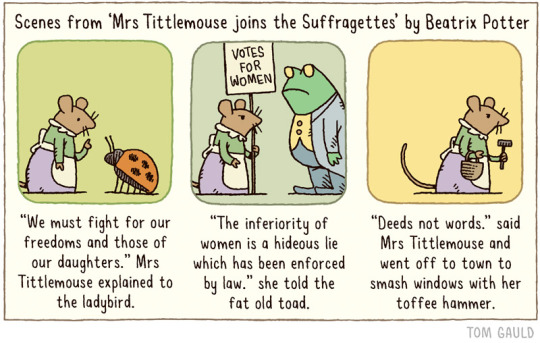#women's suffrage
Text
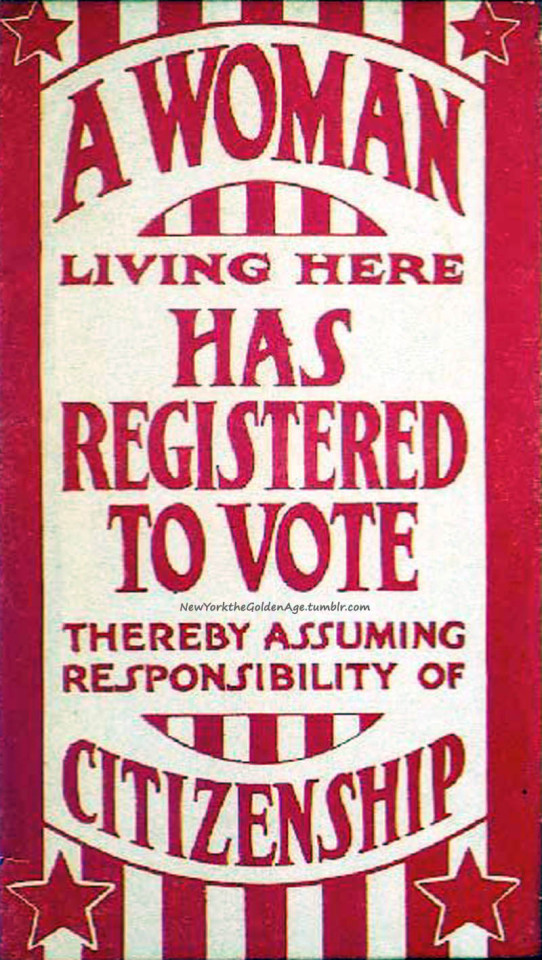
A window card from 1920, proclaiming that a newly-enfranchised woman had registered to vote.
Photo: NYC Municipal Archives
#vintage New York#1920s#19th Amendment#women's suffrage#female suffrage#poster#right to vote#voter registration#citizenship
967 notes
·
View notes
Text

Remembering the women that fought for our right to vote
150 notes
·
View notes
Text

Suffragist poster detail, 1913. United Kingdom.
Harvard Library
#political posters#women's suffrage#uk#big cat#tables turned#dangerous animals#women's rights#nemfrog#posters#1913#1910s#bad cat
290 notes
·
View notes
Photo
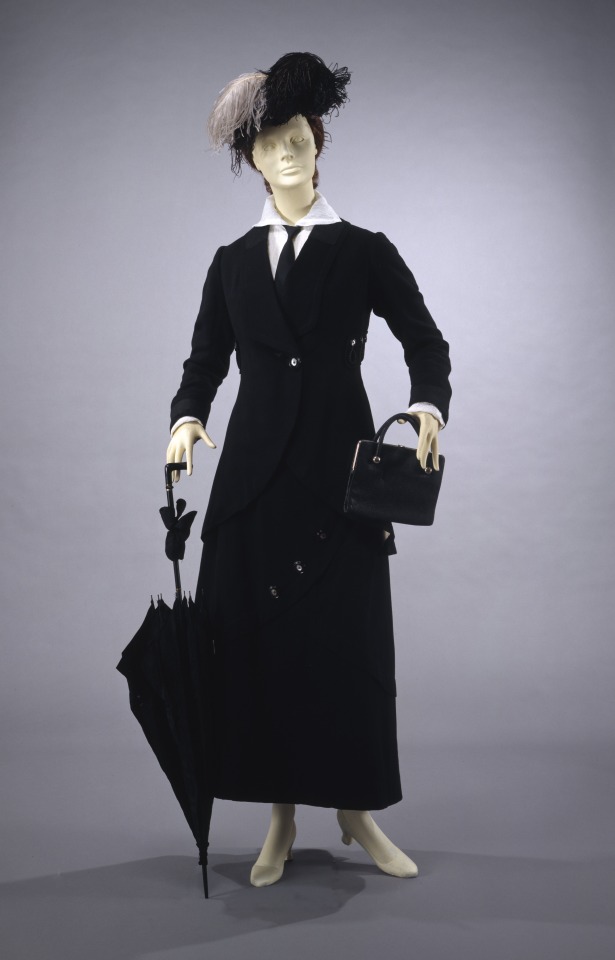
Suffragette Suit
c.1910
Portugal
Museu Nacional do Traje (Accession Number: 15748; 21642; 23369)
#suit#fashion history#historical fashion#1910s#turn of the century#20th century#portugal#edwardian#black#women's suffrage#suffragette#silk#satin#feathers#wool#museu nacional do traje
429 notes
·
View notes
Text
❣️♀️Beloved Woman
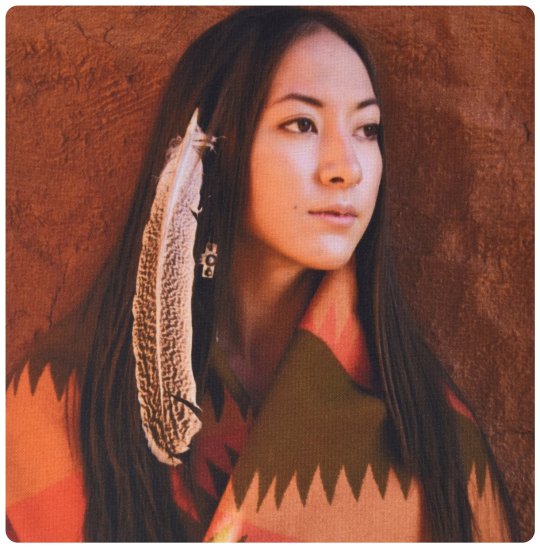
Cherokee Beloved Woman Nancy Ward
Nancy Ward, or Nan'yehi (nan yay hee), is the most famous Cherokee Beloved Woman. The role of Beloved Woman, Ghigau (Ghee gah oo), was the highest a Cherokee woman could aspire to. A Ghigau had a voice and vote in General Council, leadership of the Woman's Council, the honor of preparing and serving the ceremonial Black Drink, the duty of ambassador of peace-negotiator, and the right to save the life of a prisoner already condemned to execution.
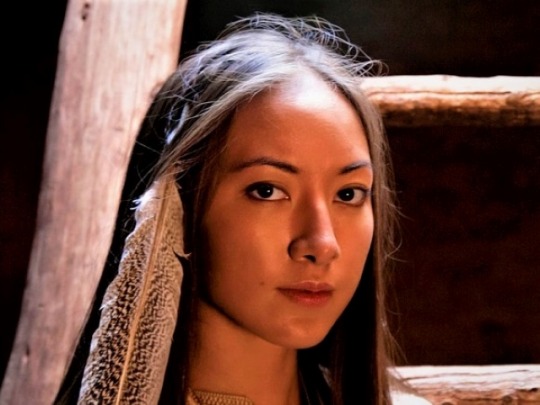
The Native American Cherokee
The word Cherokee is believed to have evolved from a Choctaw word meaning "Cave People." It was picked up and used by Europeans and eventually accepted and adopted by Cherokees. Traditionally, the people now known as Cherokee refer to themselves as aniyun-wiya, a name usually translated as "the Real People," sometimes "the Original People."
The Role of the Cherokee Woman
The Cherokee were matrilineal with a complex society structure. Clan kinship followed the mother's side of the family. The children grew up in the mother's house, and it was the duty of an uncle on the mother's side to teach the boys how to hunt, fish, and perform certain tribal duties. The women owned the houses and their furnishings. Marriages were carefully negotiated, but if a woman decided to divorce her spouse, she simply placed his belongings outside the house. Cherokee women also worked hard. They cared for the children, cooked, tended the house, tanned skins, wove baskets, and cultivated the fields. Men helped with some household chores like sewing, but they spent most of their time hunting.

Women in the Cherokee society were equal to men. This privilege led an Irishman named Adair who traded with the Cherokee from 1736-1743 to accuse the Cherokee of having a "petticoat government."
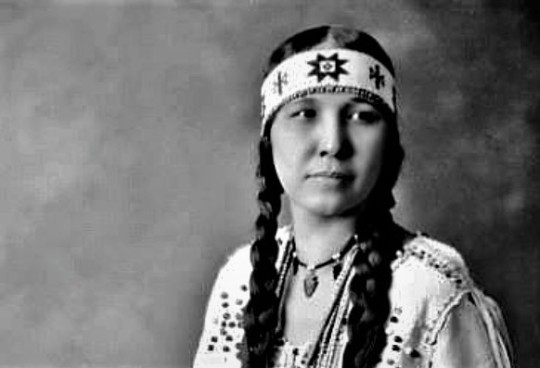
Princess Tsianina Red Feather
Tsianina Red Feather was not a "Princess." The Cherokee never had princesses. This is a concept based on European folktales and has no reality in Cherokee history and culture. Beloved women and high ranking women in a clan were treated with such reverence, that Europeans assumed they were some type of royalty.
Red Feather was born Florence Tsianina Evans on December 13,1882 in Eufallia (Oklahoma Territory) to Creek and Cherokee parents. All her 9 siblings were musical, but she was the one who stood out.
At age 14, she went to Denver to be trained to sing. There, she met the composer Charles Cadman and began touring with him at 16. She became a mezzo soprano virtuoso. While touring the United States, Canada, Paris and London, she wore native dress, braided her hair and wore a headband she beaded herself.

In 1918, she and Cadman debuted "Shanewis" (The Robin Woman) at the Metropolitan Opera; the cast received 22 curtain calls. Cadman based the opera on Native American stories told by Redfeather. Although this opera had many firsts, it became the first contemporary opera to be performed for a 2nd season at the Met.

The Robin Woman: Shanewis, 1918 - an opera in one act and two scenes by American composer Charles Cadman and Tsianina Redfeather Blackstone. Cadman called the work an "American opera."
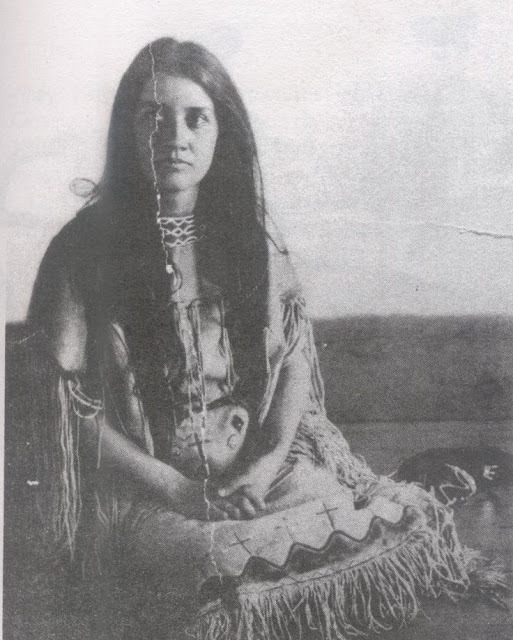
Photo is Miss Anna Trainor, who later became Mrs. Anna Bennett. She was only Cherokee on her mother's side, but because it was the woman's bloodlines that determined kinship, she was considered Cherokee.
The title Ghigau also translates to "War Woman," and Nan'yehi (Nancy Ward) earned the title by taking up her husband's gun when he was slain in a battle against the Creeks and leading her people to victory. Another War Woman, Cuhtahlatah, won honor during the American Revolutionary period by leading Cherokee warriors to victory after her husband fell. She later joined in a vigorous war dance carrying her tomahawk and gun.
It was important to the Cherokee that their losses be compensated with the same number of prisoners, scalps, or lives. Woman led in the execution of prisoners. It was their right and responsibility as mothers. Women had the right to claim prisoners as slaves, adopt them as kin, or condemn them to death "with the wave of a swan's wing."
In the Cherokee society your Clan was your family. Children belonged to the entire Clan, and when orphaned were simply taken into a different household. Marriage within the clan was strictly forbidden, or pain of death. Marriages were often short term, and there was no punishment for divorce or adultery. Cherokee women were free to marry traders, surveyors, and soldiers, as well as their own tribesmen.
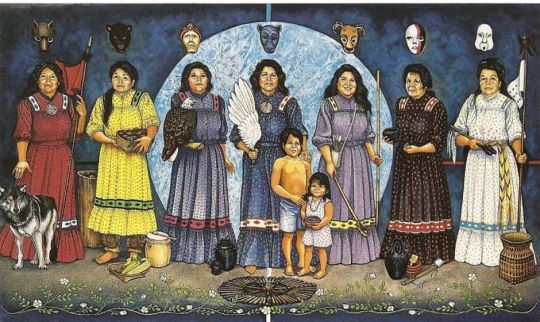
7 Cherokee Clans - L to R: 1.Wolf Clan 2.Long Hair Clan 3.Red Tail Hawk Clan 4.Blue Holly Clan 5.Deer Clan 6.Paint Clan 7.Wild Potato Clan
Cherokee girls learned by example how to be warriors and healers. They learned to weave baskets, tell stories, trade, and dance. They became mothers and wives, and learned their heritage. The Cherokee learned to adapt, and the women were the core of the Cherokee.
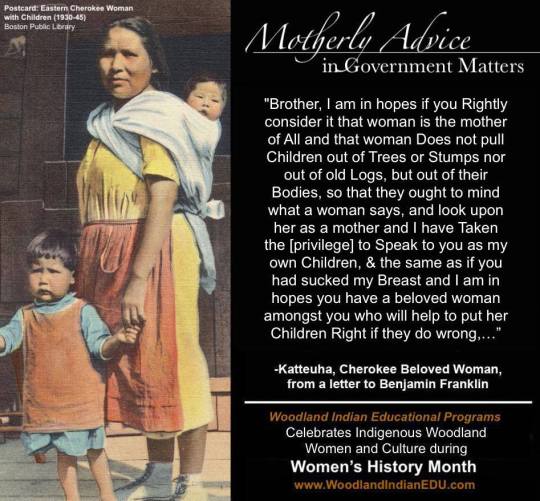
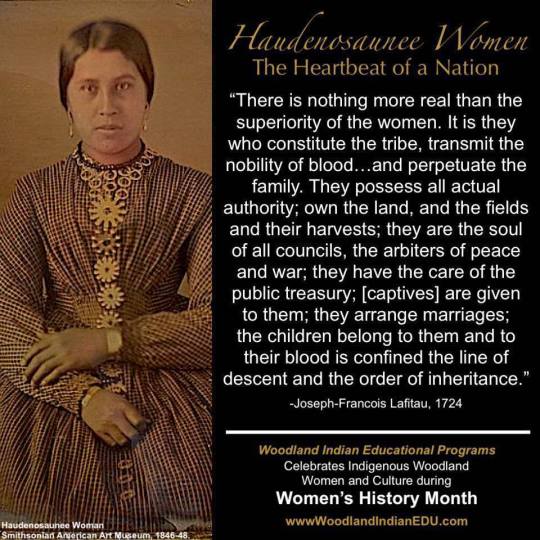
Other indigenous nations were were matrilineal. Women of the six nations Iroquois confederacy (Haudenosaunee) had a political voice on this land for at least 1,000 years.
The male chiefs who are the representatives of their clan in the confederacy of the Mohawk, Oneida, Onondaga, Cayuga, Seneca, and Tuscarora Nations are selected, held in office, and removed by women – the clan mothers. Founded on the shores of Onondaga Lake, this oldest continuing democracy in the world is based on a system of gender balance. The position of the chief is vested in the clan mother, who is the eyes and ears of the people, while the chief is her voice. Women were “the great power among the clan, as everywhere else,” Elizabeth Cady Stanton marveled. Lucretia Mott wrote about listening to “speeches of their chiefs, women as well as men” (clan mothers and chiefs) when she visited the Cattaraugus Seneca community during the summer of 1848 before Mott, with Stanton and Quaker friends, organized the Seneca Falls convention.
In other words, the Beloved and Haudenosaunee women influenced the Women's Suffrage Movement.
#original people#cherokee#native american#Beloved Woman#nancy ward#choctaw#Shanewis#clan#indigenous#women#katteuha#haudenosaunee woman#Iroquois confederacy#suffragette#women's suffrage#Elizabeth Cady Stanton#Lucretia Mott#Seneca Falls#clans#society#culture
227 notes
·
View notes
Photo

Alison T. Hopkins at the White House gates on New Jersey Day. January 30, 1917.
453 notes
·
View notes
Text

#suffragette#women's suffrage#history#votes for women#voting#activism#war#webcomic#humor#john atkinson#wronghands
113 notes
·
View notes
Photo

A mysterious stranger met with us in a gloomy underground parking garage and passed us some information on how to stick it to the tumblr Man. So here we are again for now. At least until the Automattic Inc. goons bust down our doors.
What better way to announce our return than a photo of a fashionable Suffragette who also stuck it to the Man?
Date unknown, but probably 1910s.
156 notes
·
View notes
Text
Yesterday marked the death of Sylvia Pankhurst - one of the finest revolutionary communists to have ever graced Britain's shores. We have rarely seen such fighters on this earth.
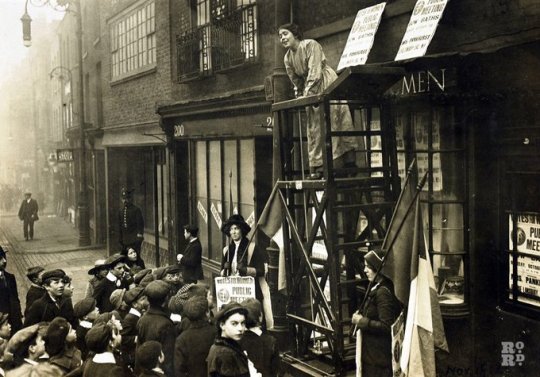
Sylvia was the most tortured suffragette, targetted for her insistence on including working class women within the demands of women's suffrage (much to the disdain of her mother and sister). She did not balk against repeated forced feeding, hunger striking and sleep striking.
She was one of a handful of communists in Britain who opposed the first world war. Her criticism of the war was ceaseless. Practically isolated, she organised relief for working class people in London with cost-price restaurants, free child care for mothers, and more.
She broke with the Labour Party over this, and never returned despite the enormous pressure put upon her by the British labour movement and, later, the Third Internationale. Her arguments with Lenin remain a key debate in communist and British politics.
Pankhurst stood resolutely with the Bolshevik revolution at its outbreak, and was pivotal in organising the "Hands Off Russia" campaign in Britain - which culminated in dock workers across the country refusing to load any munitions to ships.
Pankhurst was an outspoken opponent of racism. Her newspaper - then the Worker's Dreadnought - was the first newspaper in Britain to hire black journalists. When articles written by the Jamaican journalist, Claude McKay, were viewed as seditious, she went to jail for him.

Her support for Irish independence never wavered. She supported Larkin, the Irish Transport and General Workers' Union and United Builders' Labourers Union during the Dublin lock-outs. She stood by the Irish Citizen Army during the Easter Rising.
She was one of the first in Britain to recognise the dangers of fascism, her warnings and agitation beginning as early as 1920. Through this struggle, she became deeply involved in Ethiopian national liberation, where she spent the last years of her life.
All of this is just the tip of the iceberg of the contributions Sylvia made in her life. She did all of this at great cost to herself, enduring her mother and sister denouncing her in the press repeatedly, endless slander, rejection by the mainstream communist movement and worse.

Sylvia also belongs to the great pantheon of disabled revolutionaries, being diagnosed with endometriosis whilst in prison. This, along with the damage done to her organs by forced feeding, left her with often crippling stomach problems.
"I am going to fight capitalism even if it kills me. It is wrong that people like you should be comfortable and well fed while all around you people are starving." She fought until she died, but capitalism didn't kill her. At aged 78, Sylvia passed on.
She was given a state funeral in Ethiopia, and remains the only foreigner buried in the front of Holy Trinity Cathedral. An Ethiopian migrant, cited anonymously in Rachel Holmes' biography of Pankhurst, summed up what she meant to him thus:
"After God, Sylvia Pankhurst".

To learn more about Sylvia, we highly recommend Rachel Holmes' biography, "Sylvia Pankhurst: Natural Born Rebel".
#sylvia pankhurst#communism#politics#marxism#philosophy#communist#anti imperialism#history#leftism#world history#working class#feminism#womens rights#smash the patriarchy#suffragette#suffragists#women's suffrage
95 notes
·
View notes
Text
Life is just one damn thing after another

Find 1910s postcards on both sides of the women's suffrage movement in Postcard Tag! You never know what you'll find next
#newberry library#libraries#special collections#archives#digital humanities#vintage#women's suffrage#suffragette#crowdsourcing#newberryq
67 notes
·
View notes
Text
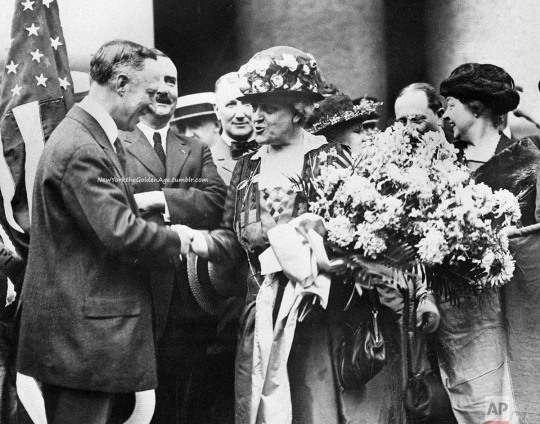
Former NY Governor Alfred E. Smith welcomes Carrie Chapman Catt, women's suffrage leader, on her triumphal return from Tennessee, August 27, 1920. Tennessee was the last state to ratify the 19th Amendment, giving women the right to vote. Miss Catt carries a bouquet of blue and yellow flowers, colors of the National American Woman's Suffrage Association.
Photo: Associated Press
#vintage New York#1920s#Carrie Chapman Catt#women's suffrage#19th Amendment#suffrage#suffragist#August 27#27 August#Al Smith#27 Aug.#Aug. 27#triumph#Constitutional amendment#right to vote
119 notes
·
View notes
Text



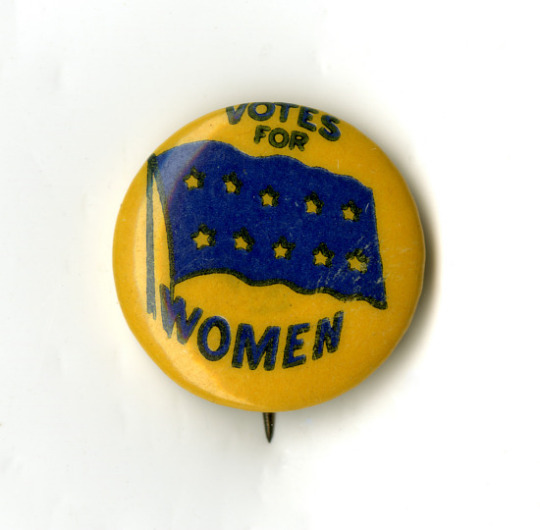
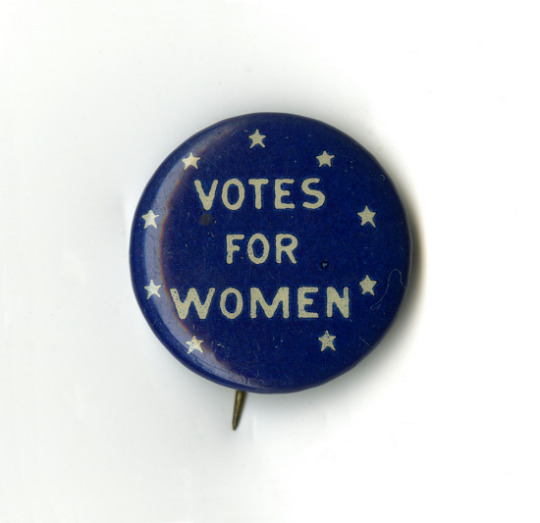
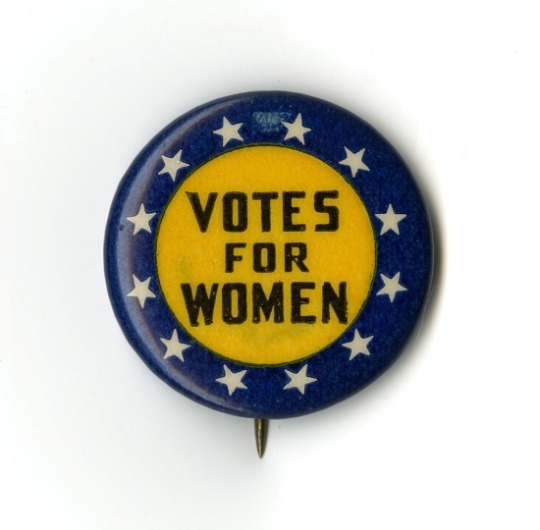
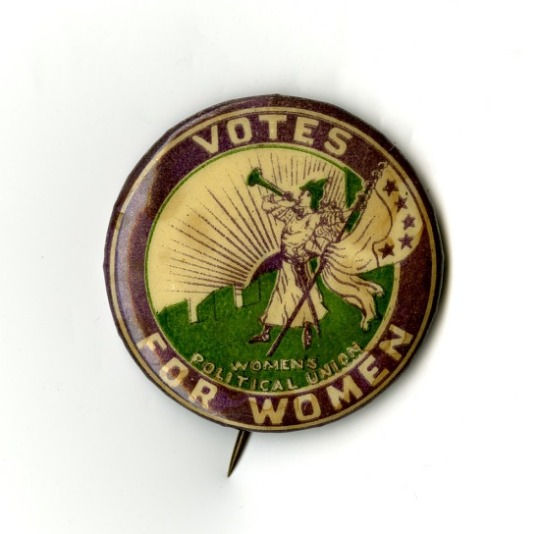

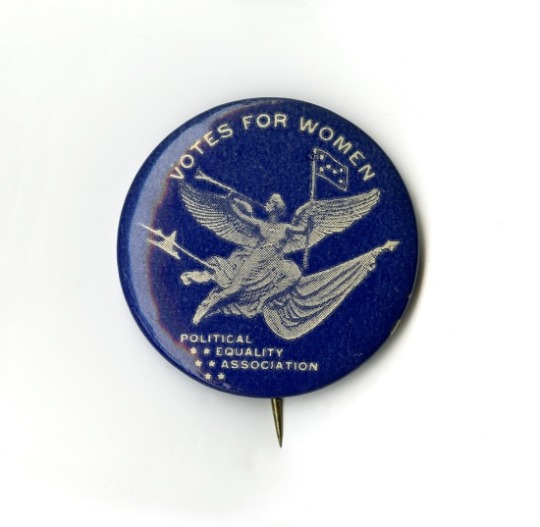
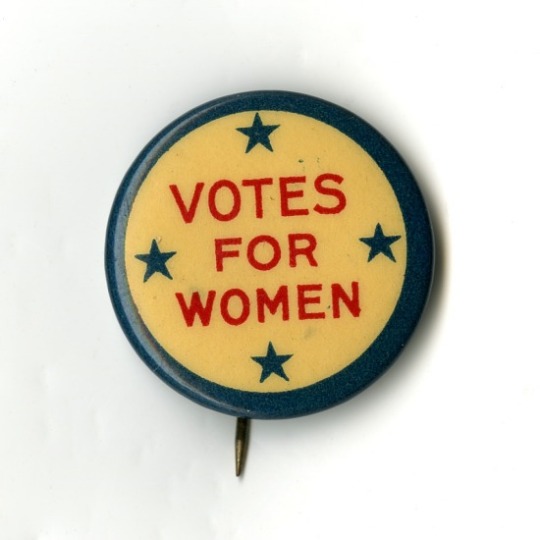


pins from the women's suffrage movement found on the smithsonian institution website
56 notes
·
View notes
Text

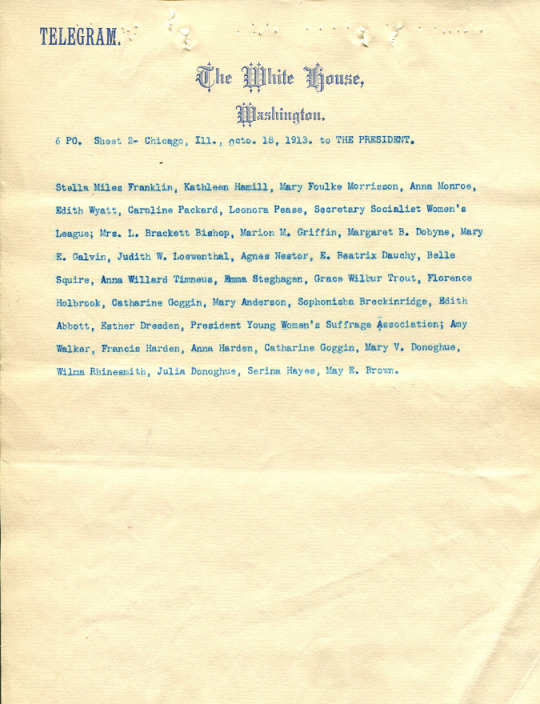
Telegram to President Woodrow Wilson from Jane Addams and Other Women Regarding the Deportation of Emmeline Pankhurst
Record Group 85: Records of the Immigration and Naturalization Service Series: Subject and Policy Files File Unit: Appeal of Mrs. Emmeline Pankhurst for admittance for visit, English Suffragette
This telegram petitioned the Department of Labor and their decision to deport Emmeline Pankhurst, a British suffragette. The authors wanted the board to reconsider and maintain "America's devotion to liberty."
Telegram The White House, Washington 6 PO.FD. 283 139 extra 10:25 p.m. Sa, Chicago, Ill., October 18, 1913. The President. Whereas, the Associated Press reports to the American public that Mrs. Pankhurst's deportation has been ordered by the board of inquiry at Ellis Island and, Whereas, such action is in direct violation of the traditions and customs of the United States which has always been hospitable to the political offenders and revolutionists of all nations, and, Whereas, our sister republic, France, is at the present moment sheltering Christabel Pankhurst, Now, therefore, be it resolved: That we, the undersigned women of Chicago, protest against this flagrant violation of our long established public policy, and, Be it further resolved: That we respectively petition the Department of Labor in reviewing the case of this distinguished English woman to reconsider the decision of the Board of Inquiry and to admit Mrs. Pankhurst; thus maintaining the high traditions of America's devotion to liberty and right of free speech. (Signed) Jane Addams, Louise DeKoven Bowen, Mary Rozette Smith, Mary McDowell, Margaret Dreier Robins, Harriet Taylor Treadwell, President Chicago Political Equality League; Margaret A. Haley, Business Representative Chicago Teachers' Federation; Ida L. M. Furstman, President Chicago Teachers' Federation; Mrs. Harriet S. Thompson, Director Chicago Political Equality League; Edith A. Phelps, Anna Nichols, Laura Dainty Pelham,
Telegram The White House, Washington 6 PO. Sheet 2- Chicago, Ill., Octo. 18, 1913. to the President. Stella Miles Franklin, Kathleen Hamill, Mary Foulke Morrisson, Anna Monroe, Edith Wyatt, Caroline Packard, Leonora Pease, Secretary Socialist Women's League; Mrs. L. Brackett Bishop, Marion M. Griffin, Margaret B. Dobyne, Mary E. Galvin, Judith W. Loewenthal, Agnes Nestor, E. Beatrix Dauchy, Belle Squire, Anna Willard Timneus, Emma Steghagen, Grace Wilbur Trout, Florence Holbrook, Catharine Goggin, Mary Anderson, Sophonisba Breckinridge, Edith Abbott, Esther Dresden, President Young Women's Suffrage Association; Amy Walker, Francis Harden, Anna Harden, Catharine Goggin, Mary V. Donoghue, Wilma Rhinesmith, Julia Donoghue, Serina Hayes, May E. Brown.
49 notes
·
View notes
Text
just saw another white woman (”another” in reference to myself, here) call the women’s suffrage movement the “(white) women’s suffrage movement”
and while it is VERY important to acknowledge the racist behavior rampant in the mainstream suffrage movement, and that the 19th Amendment did not grant all women the right to vote in the U.S.
there were absolutely suffragists of color, too.
here is an excellent website focused on info about Black suffragists in particular
here is an article discussing some Asian and Pacific Islander women who were active in the suffrage movement
look, I understand the classic White Progressive impulse to overcorrect when considering the injustices our ancestors perpetrated. I’ve been there, too. but as with many cases, this is one where going too far in the other direction leads to the erasure of important, interesting, and influential PoC from history
#women's suffrage#women's history#black history#history#asian-american history#AAPI history#american history
804 notes
·
View notes
Text
~ Helen Keller ~
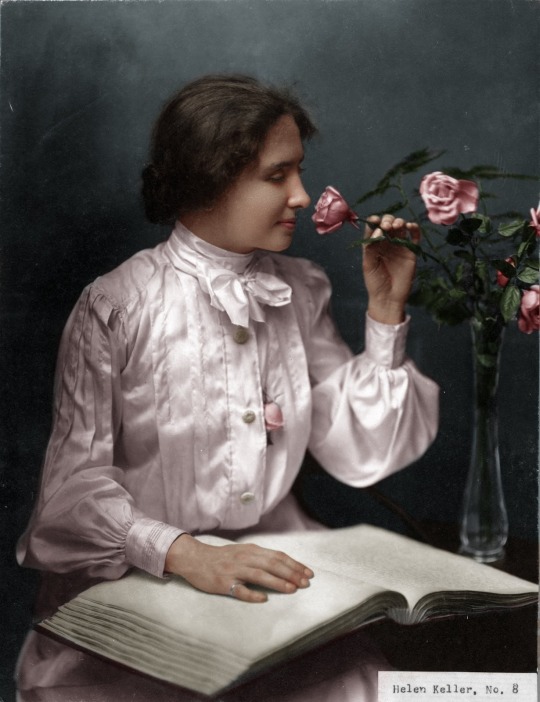
Helen Keller (colorized)
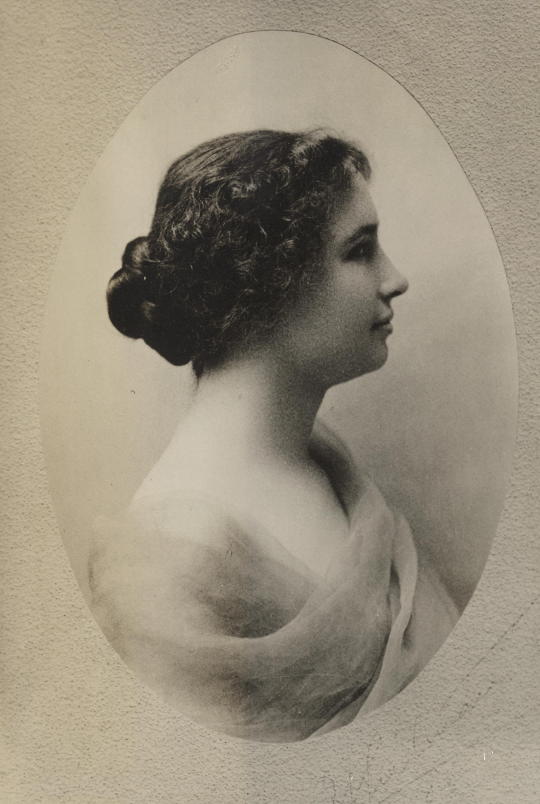
Miss Helen Keller - Portrait US Library of Congress
Helen Keller was an author, lecturer, suffragists and crusader for the handicapped. Born in Tuscumbia, Alabama, She lost her sight and hearing at the age of nineteen months to an illness now believed to have been scarlet fever. Five years later, on the advice of Alexander Graham Bell, her parents applied to the Perkins Institute for the Blind in Boston for a teacher, and from that school hired Anne Mansfield Sullivan.
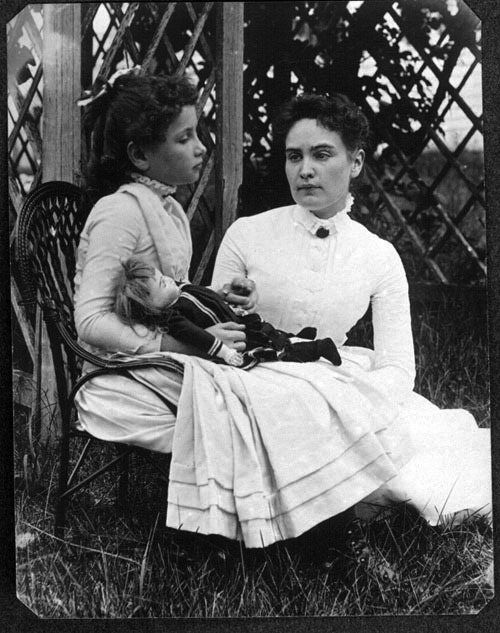
Keller (left) with Anne Sullivan vacationing on Cape Cod in July 1888
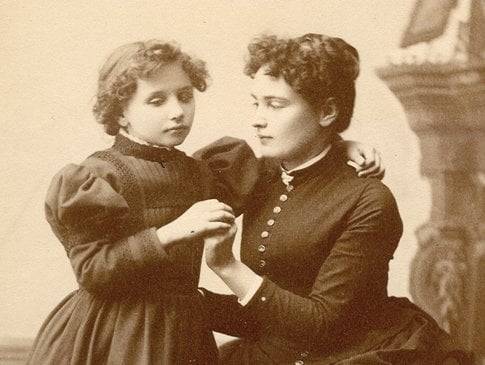
Through Sullivan’s extraordinary instruction, the little girl learned to understand and communicate with the world around her. She went on to acquire an excellent education and to become an important influence on the treatment of the blind and deaf.
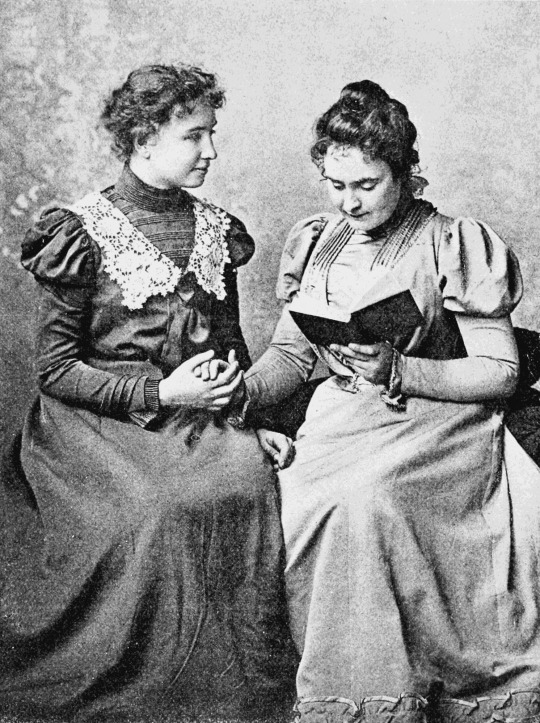
Helen Keller in 1899 with lifelong companion and teacher Anne Sullivan. Photo taken by Alexander Graham Bell at his School of Vocal Physiology and Mechanics of Speech.
Her unprecedented accomplishments in overcoming her disabilities made her a celebrity at an early age; at twelve she published an autobiographical sketch in the Youth’s Companion, and during her junior year at Radcliffe, she produced her first book, The Story of My Life, still in print in over fifty languages.
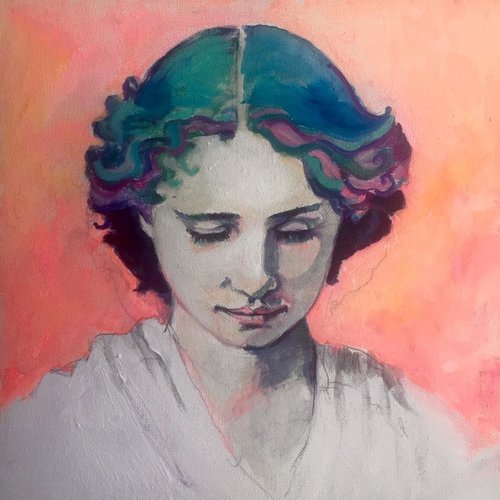
Helen Keller — Groundbreaking Girls
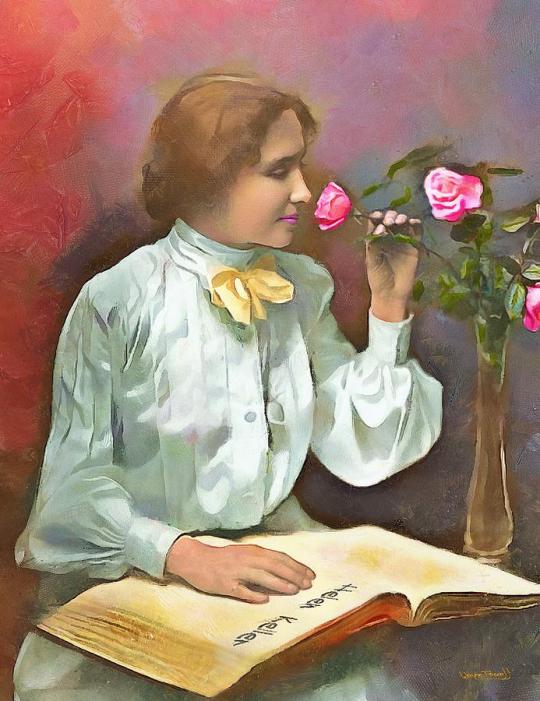
Painting of Keller's colorized portrait by Wayne Pascall
Her friendship with Mark Twain
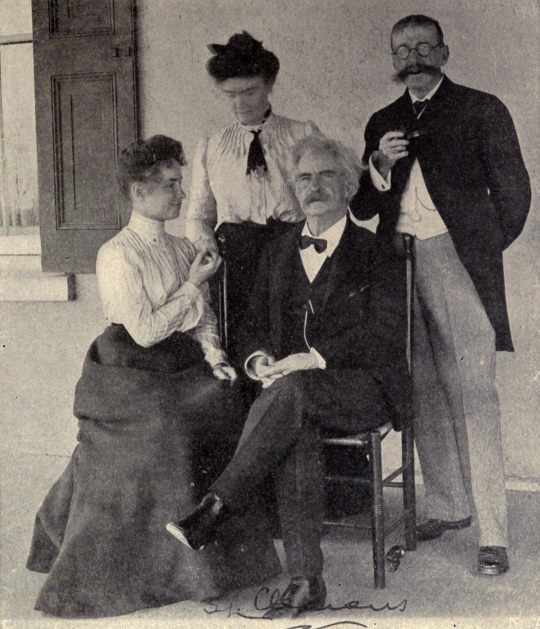
"Helen Keller, Miss Sullivan, Mark Twain and Laurence Hutton."
“From that day until his death we were friends,” Keller recalled later. She was already a fan of his work and thrilled to his deep voice and his many hand gestures, which she followed with her own fingertips. She wrote of him:
"He entered into my limited world with enthusiasm just as he might have explored Mars. Blindness was an adventure that kindled his curiosity. He treated me not as a freak, but as a handicapped woman seeking a way to circumvent extraordinary difficulties. There was something of divine apprehension in this rare naturalness towards those who differ from others in external circumstances."

Helen Keller with Mark Twain - Twain came to Keller’s defense, after reading in her book about a plagiarism scandal that occurred in 1892 when, at only twelve years old, she was accused of lifting her short story “The Frost King” from Margaret Canby’s “Frost Fairies.” Though a tribunal acquitted Keller of the charges, the incident still pissed off Twain. The letter is attached to the photo above
Letters between Mark Twain and Helen Keller.
Though Helen hailed from a respectable Southern family, 19th-century America was flummoxed by the prospect of teaching a deaf-blind girl to talk, read, and learn. Helen’s tutor and governess, Annie Sullivan, fought for her admission to various schools that offered special education. But the cost of educating someone like Helen was high. Clemens wrote to a rich friend on her behalf:
"It won’t do for America to allow this marvelous child to retire from her studies because of poverty. If she can go on with them she will make a fame that will endure in history for centuries. Along her special illness she is the most extraordinary product of all the ages…lay siege to your husband & get him to interest himself and Messrs. John D. & William Rockefeller & the other Standard Oil chiefs in Helen’s case; get them to subscribe an annual aggregate of six or seven hundred or a thousand dollars- & agree to continue this for three or four years, until she has completed her college course…."
Thanks to his intervention, the support of his friend Henry Rogers and Standard Oil, Helen was able to complete her education and graduate cum laude from Harvard’s Radcliffe College. Clemens and Keller remained friends for the rest of his life. They shared an interest in radical politics and a love for life despite their different temperaments. Helen, an avowed optimist, often made fun of Clemens for his avowed pessimism, telling him she didn’t believe a word of his sardonic jokes. As for Clemens, Chambliss writes that he felt she was one of the most important historical figures of all time, “the most wondrous person of her sex that has existed on this earth since Joan of Arc.”
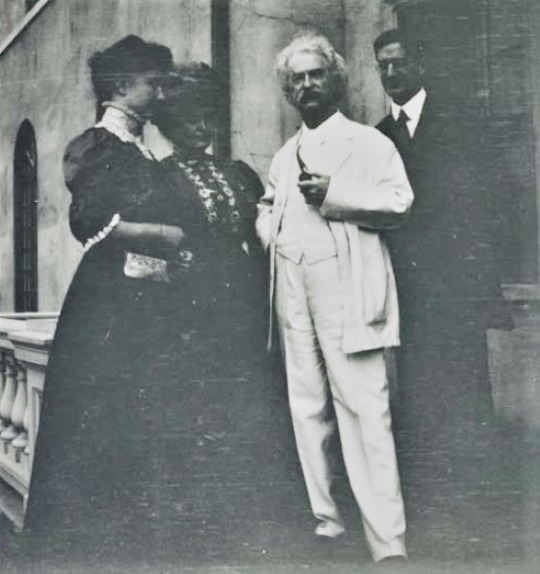
Keller, Sullivan, Twain, & Sullivan’s husband John Macy above at Twain’s home
We also have Twain—not playwright William Gibson—to thank for the “miracle worker” title given to Keller’s teacher, Anne Sullivan. As a tribute to Sullivan for her tireless work with Keller, he presented her with a postcard that read, “To Mrs. John Sullivan Macy with warm regard & with limitless admiration of the wonders she has performed as a ‘miracle-worker.’” In his 1903 letter to Keller, he called Sullivan “your other half… for it took the pair of you to make complete and perfect whole.”
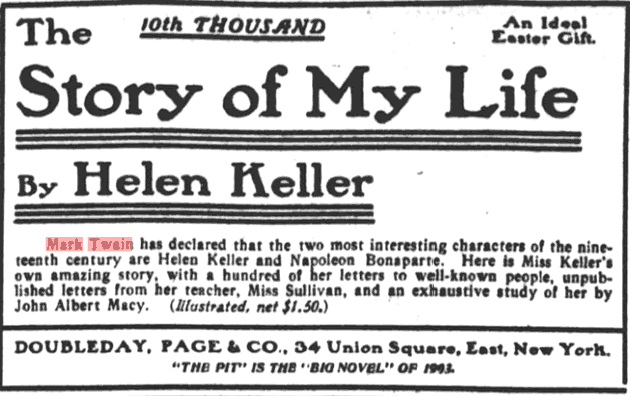
Twain was especially impressed by Keller’s autobiography, writing to her, “I am charmed with your book—enchanted.” (See his endorsement in a 1903 advertisement, above.)
Keller & Clemens also shared a love of dogs
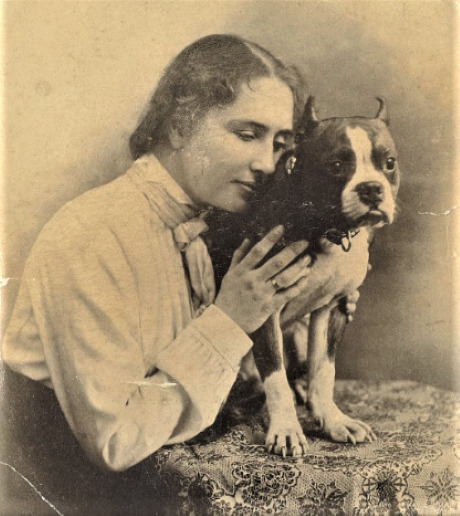
Helen Keller with her dog Sir Thomas.
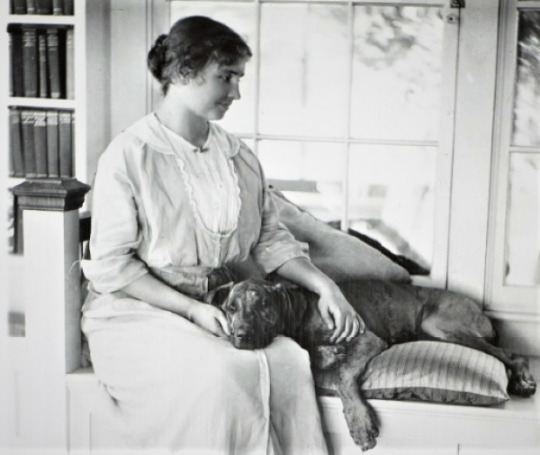
Helen Keller seated on a window bench with an arm around her dog Sieglinde.
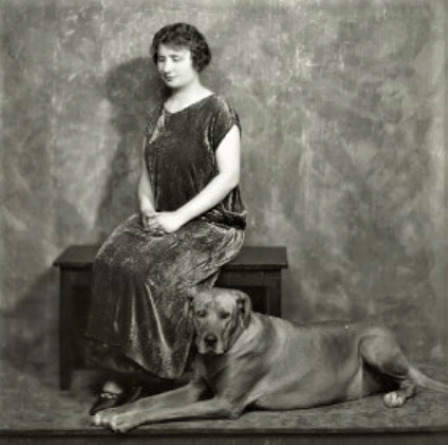
Helen Keller seated on a bench indoors, possibly in the photographer's studio wth a dog seated on the ground beside her.
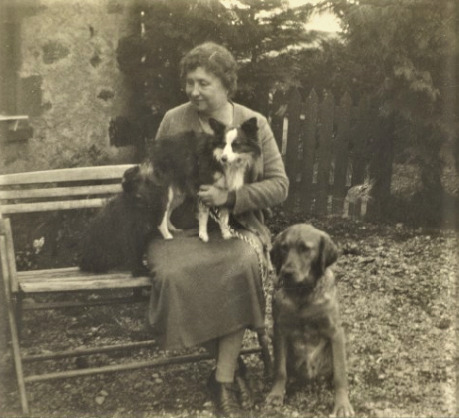
Helen Keller seated on a slatted bench in front of a Farm House in 1935 with her dogs Dileas, on her lap, Maida beside her & Golden.

Helen Keller teaching a girl sign language.
Widely honored throughout the world and invited to the White House by every U.S. president from Grover Cleveland to Lyndon B. Johnson, Keller altered the world’s perception of the capacities of the handicapped. More than any act in her long life, her courage, intelligence, and dedication combined to make her a symbol of the triumph of the human spirit over adversity.

Helen Keller - 1880-1968
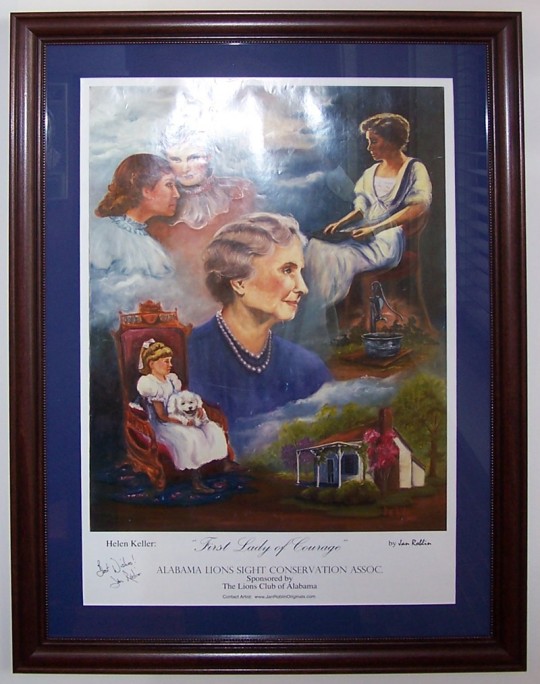
Helen Keller Archive
#helen keller#samuel clemens#mark twain#anne sullivan#anne sullivan macy#john macy#Henry Rogers#blind#sign language#braille#miracle worker#Alexander Graham Bell#Radcliffe College#suffragette#women's suffrage#suffrage#deaf#handicapped#cliff clavin#art
108 notes
·
View notes
